The weak economy has been good for breakfast consumption, but terrible for cereal sales. What’s gone wrong – and will the arrival of Post prompt a shake up? Nick Hughes reports
Are cereals in danger of being blackballed by the breakfast club?
Breakfast consumption is on the up, but cereal, which accounts for the lion’s share of the market, has seen its market share slip 1%, according to the latest Kantar Worldpanel data.
Alarmingly, eight of the top 10 brands experienced sharp falls in value or volume sales more often than not, both in the year to 16 July, the worst performer being Rice Krispies, which slumped 11.8% in value and a whopping 15.3% in volume.
Their plight, which comes despite a major boost in advertising spend (see p58), makes it all the more remarkable that US heavyweight Post has chosen now to enter the UK market (see The Grocer, 6 August, p24). But does its move actually signal improving confidence in the cereal market and could it prompt a much-needed shake up, not just of cereals, but of the wider breakfast category?
It would be wrong to imply that the cereal category’s problems have happened overnight. A vicious cycle of heavy promotional activity and commodity-driven price rises, coupled with the growing popularity of hot cereals, has been conspiring against ‘cold’ cereals for some time, as reflected in The Grocer Top Products Survey [18 December 2010].
The category has been hit by a perfect storm, agrees Sophie Robins, client manager at Kantar Worldpanel. “Shoppers are buying cereal less often this year, cutting back especially on the healthiest types of cereal,” she notes. “Partly, this is due to the dominance of hot cereal and strong promotions last year making it difficult to achieve the same growth this year, but also we think shoppers have become less engaged with cereal.”
None of the big brands have been immune. Kellogg’s CEO John Bryant summed up the category’s predicament last month when announcing the company’s Q2 results. “The UK is a very tough consumer environment right now,” he admitted. “The consumer is very depressed. I do think with inflation coming through and cost pressures coming through, you are seeing improved trends in that UK cereal category, but it’s still lagging with trends we’re seeing in the US.”
Kellogg’s communications manager Paul Wheeler attests to the negative impact of heavy promotional activity. “It’s difficult to say if promotions have peaked,” he says. “However, they are already at levels that are unsustainable and eroding value. Category building initiatives, such as innovation that will unlock greater consumption, are more critical than ever to start reducing the promotional activity.”
There has been a lack of “news” in the category, he admits. “Our insight tells us shoppers respond to news and we are confident we have the right plans in place to help address this. This includes our recent launch of the entire All-Bran range, including a new product, All-Bran Golden Crunch.”
Kellogg’s believes the market will pick up in the second half of the year. Post is clearly equally confident in the category’s prospects, which is perhaps no wonder when it’s introducing a totally new proposition to a market largely bereft of ‘news’ beyond brand extensions.
Honey Bunches of Oats the third biggest seller in the US after Cheerios and Special K hit shelves in Asda, Morrisons, Budgens and Tesco two weeks ago in a move that could be followed by further high-profile launches.
Paradoxically, it is targeting families in contrast to many brands in the UK that have shifted their attention to young adults, particularly the elusive 17 to 24-year-old male.
Apart from men over 65 and women aged between 45 and 64, 17 to 24-year-old men represent the only consumer demographic to have reduced its breakfast consumption in the past year. This makes it a huge opportunity one that has been targeted largely by non-cereal manufacturers [Kantar].
It doesn’t take a genius to figure out what market Toast Me! (see p57) primarily has in mind. But it’s not an easy market to crack, says Ferrero’s customer development director Levi Boorer. “I think young males can be viewed as a potentially lucrative market, but can also be seen as a difficult audience to convince that breakfast is the most important meal of the day,” he says.
Young men prefer snacks and, if not snacks, breakfasts that resemble snacks, which possibly explains why Toast Me! has enjoyed such strong sales. They’re primarily on the go consumers, adds Stephen Clifford, marketing controller of Country Choice, which supplies retailers with in-store bakery products. “A lot of our breakfast consumption comes from younger males,” he says. “They simply don’t sit down to Kellogg’s Corn Flakes and a round of toast and Marmite; it’s just not their lifestyle, irrespective of economics.”
Carla Rampley, marketing manager for Produced In Italy, believes brands need to do more to stir young males from their apathy. “The fact that males aged 17 to 24 are spending less would indicate that brands aren’t fulfilling this sector and it is the responsibility of manufacturers to develop products that are appealing to this age and profile,” she says. “Clearly there is an opportunity to fill this gap, but the current breakfast propositions just aren’t right.”
Particularly when it comes to cereals something Kellogg’s is attempting to address with its chocolate & hazelnut cereal brand Krave, which has now been on shelf for a year and a half. Young men and women are an under-exploited demographic that requires a new approach to marketing as well as NPD to engage, says Kellogg’s.
“The way we positioned Krave was very different from our other brands,” says Declan Lockett, head of category management at Kellogg’s. “We used a lot of digital activity and sampling in universities to encourage young people to engage with the brand and it’s worked really well for us.”
It isn’t the only cereal brand targeting young men. Weetabix, too, regards them as core consumers and believes cereals are ideally placed to capitalise because young men are primarily after “quick and, more importantly, filling foods”.
The trend for ‘front-loading’ on breakfast to save on costly snacking before lunch is not, however, being driven exclusively by young men. It’s becoming increasingly prevalent across all age groups with cereals, breads and porridge the main beneficiaries.
Quaker has grown 13% to £85.4m [Nielsen 52w/e 14 April], with sales of its Oats So Simple range leaping 21% to £60.2m in the past year. Porridge is “spot on” for consumers wanting a healthy, filling breakfast, according to Corinne Prior, Quaker marketing manager. “The slow-release energy of oats has meant that porridge has really benefited from [the front-loading] trend.”
Unlike traditional cereals, many of the recent porridge launches have also come in more convenient formats that, crucially, can be taken to work. Following the lead of the likes of Marks & Spencer, Grace and Grasshopper, Quaker last December launched Oats So Simple Pots, which unlike instant sachets require the addition of hot water only.
“The biggest breakthrough was achieving a product that tastes just as good as Oats So Simple, but can be eaten on the go,” says Prior. “There’s a real desire to eat porridge among consumers. We just have to break through the attitude that it’s difficult to make.”
Other brands have been quick to follow. In April, Mornflake launched Oats2Go Instant Porridge Pots, while others have upped the ante with ready to eat oat-based breakfasts or bircher muesli. Moma has even branched out from its original Oatie Breakfast range with an Oatie Shake and the Hodgepodge, a yoghurt pot with a layer of spiced fruit and a packet of crunchy granola to scatter on top.
“Mornings are tough enough without the stress of trying to find a breakfast that isn’t packed with grease or sugar,” says founder Tom Mercer. “I wanted Moma to help people on the go grab something really wholesome, healthy and enjoyable.”
Convenience remains key, but so does value for money and, as this latest raft of NPD demonstrates, the market has evolved significantly since Kellogg’s launched single-serving pots of Corn Flakes, Crunchy Nut and Frosties including milk into the impulse channels. Nowadays, such channels include the supermarkets, of course, and on-the-go products that can be bought in the supermarket are rapidly usurping the pricier food-to-go options available in foodservice outlets.
“Instead of treating themselves to breakfast on the way to the office, many consumers are now taking the time to prepare their own breakfast at home or are buying ingredients and eating them at work,” says Joanna Watling, marketing director for Princes. “It’s often more economical and healthier than the muffins and pastries available in coffee shops and forecourts.”
That’s not to say muffins and pastries are not doing well. Rather the reverse they’re the strongest growth segment, partly because people are eschewing foodservice outlets for multi-packs from their local supermarket and partly because of renewed innovation in the bakery category over the past year (see Focus on Bakery, The Grocer, 14 May).
“People are switching to things like crumpets, muffins and pancakes, almost to give themselves a little treat,” says Warburtons marketing director Richard Hayes. “Brioches and croissants are now becoming more of an everyday presence at home as people discover them abroad and want more variety in their breakfasts.”
Claire Low, marketing manager for Hovis, agrees. “Crumpets and croissants are the biggest driver and bagels are receiving more above-the-line advertising now. It’s about changing the mindset that breakfast is boring,” she says, adding that such innovation is vital if bakery is to return to value growth. “The bread category’s been tough for the past few years, but this year has been our toughest. The level of promotions is higher than ever.”
As well as launching NPD with genuine added value, the challenge is to communicate the importance of breakfast to consumers. For Hayes, this means thinking outside the bakery box. “We’ve almost gone to a category level, talking about usage occasions and encouraging consumers to remember to have a decent breakfast,” he says. “It’s a simple message that seems to resonate with a lot of people.”
Ferrero’s Nutella has also been pushing the breakfast message with its ‘Wake Up To Nutella’ campaign, which has been running for almost a year and has helped generate sales growth of about 20% year-on-year, according to Boorer. “In Europe, Nutella is very much a breakfast product. This has been the bedrock of the growth of the brand. We’re not creating a brand new strategy we’re essentially just implementing a winning one from the European side.”
Princes is also investing in its marketing. This summer, it is launching a £1.5m above-the-line ad campaign to educate consumers about the ambient food and drink options available. “The biggest trigger for juice sales is breakfast,” says Watling. “Our consumer research has also shown that one of the key consumption occasions for canned fruit is at the start of the day. This represents a great opportunity.”
Tropicana, meanwhile, recently ran a ‘Daily Ray of Sunshine’ marketing campaign in a bid to wake consumers up to the benefits of drinking Tropicana as part of a ‘daily ritual’. And dairy alternative brand Alpro has been offering free healthy breakfasts, smoothies and snacks to up to 360,000 festival-goers this summer.
But brand awareness is just one part of the equation. Another element is merchandising, says Allied Bakeries category director Guy Shepherd. “Consumers tell us there’s more that can be done to make breakfast products easier to shop,” he says. “Some retailers put spreads and toppings in the aisle next to bakery, but I think they can do more to bring to consumer attention that these two products go great together, so why not buy them as a pair?”
Gondola-end promotions are a firm fixture for lunchbox products, particularly around the start of the school year but the concept has yet to extend to the breakfast occasion. “If you look at the success of lunchtime meal deals, there’s got to be something we can learn,” says Lockett.
Boorer agrees. “Why not put a group of products that exist across all categories together for that breakfast occasion? I think it would be a fantastic concept.”
Whether through improved merchandising, marketing or NPD, breakfast suppliers will have to raise their games now a new kid is on the block in the form of Post. And that’s not the only challenge they face.
Margin retention will become an increasingly important issue as the latest raft of commodity price rises starts to filter through hitting consumers who have already had to cope with hefty rises in the retail price of breakfast staples.
Cereal manufacturers, in particular, will need to box clever if they want to remain members of the breakfast club.
Focus On Breakfast
Sign in to comment on this article
Not logged in before? Register for FREE guest access today.
You will be able to:
- Read more stories
- Receive daily newsletters
- Comment on stories
Advert







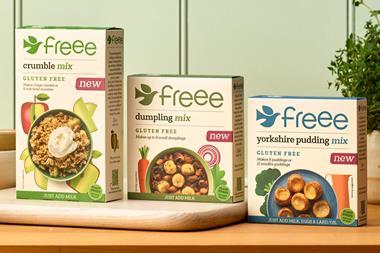
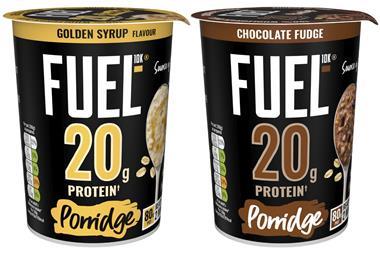

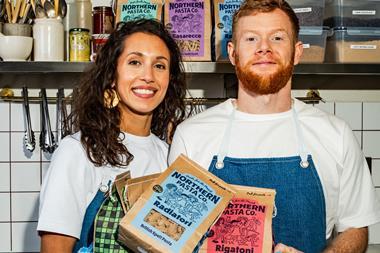

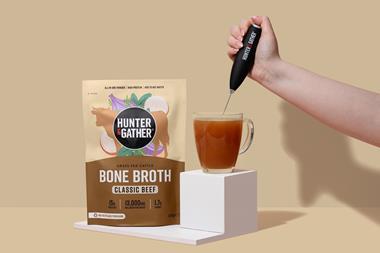
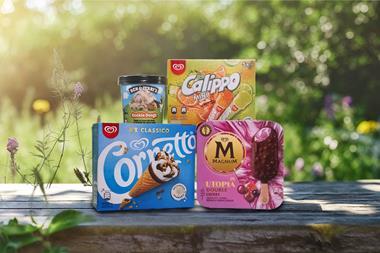
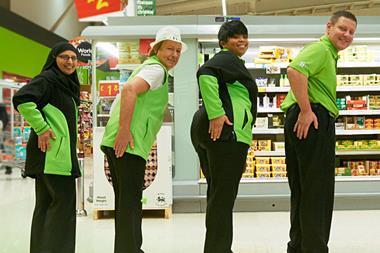




No comments yet